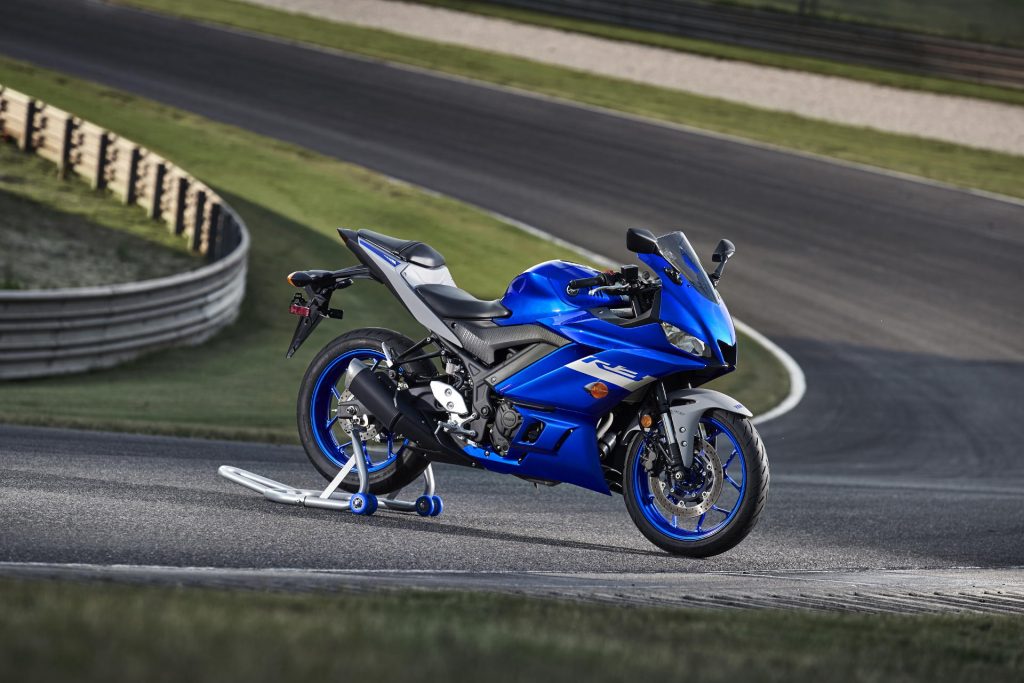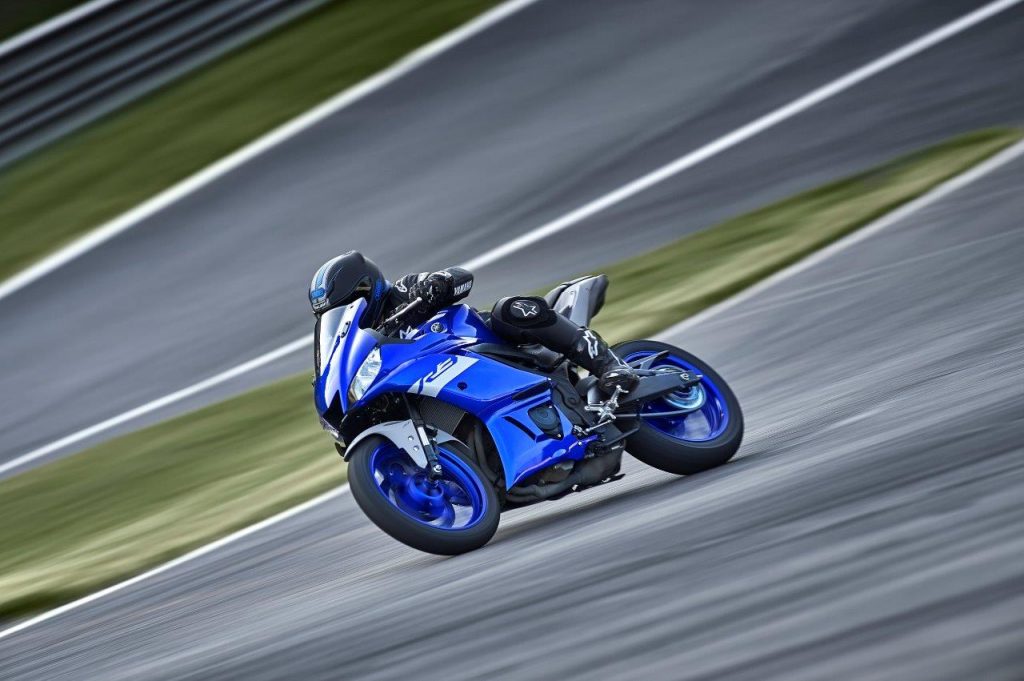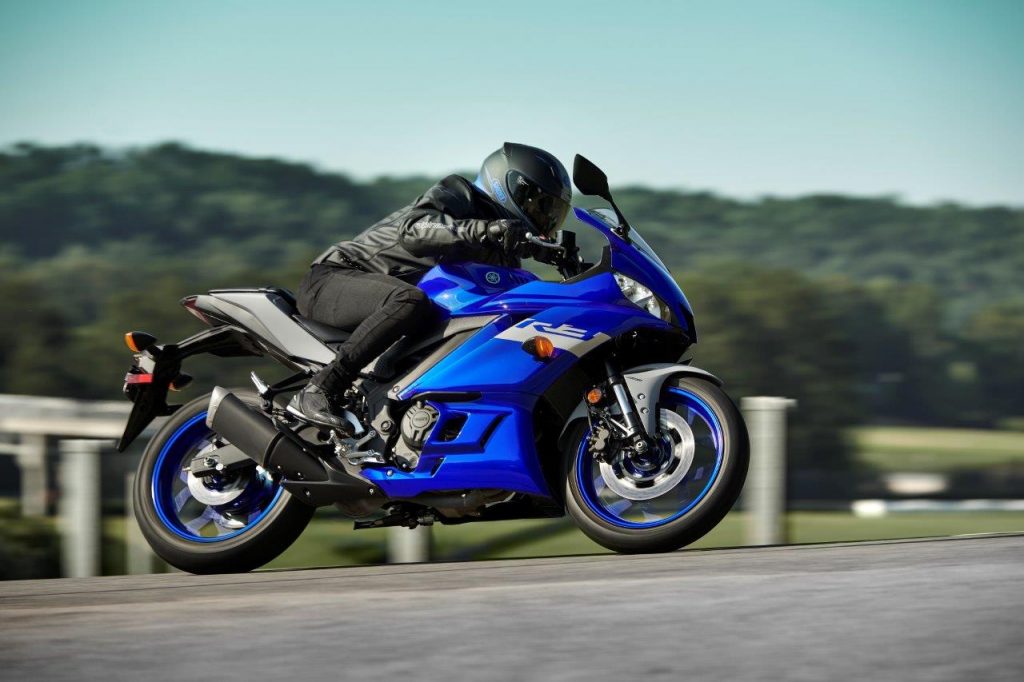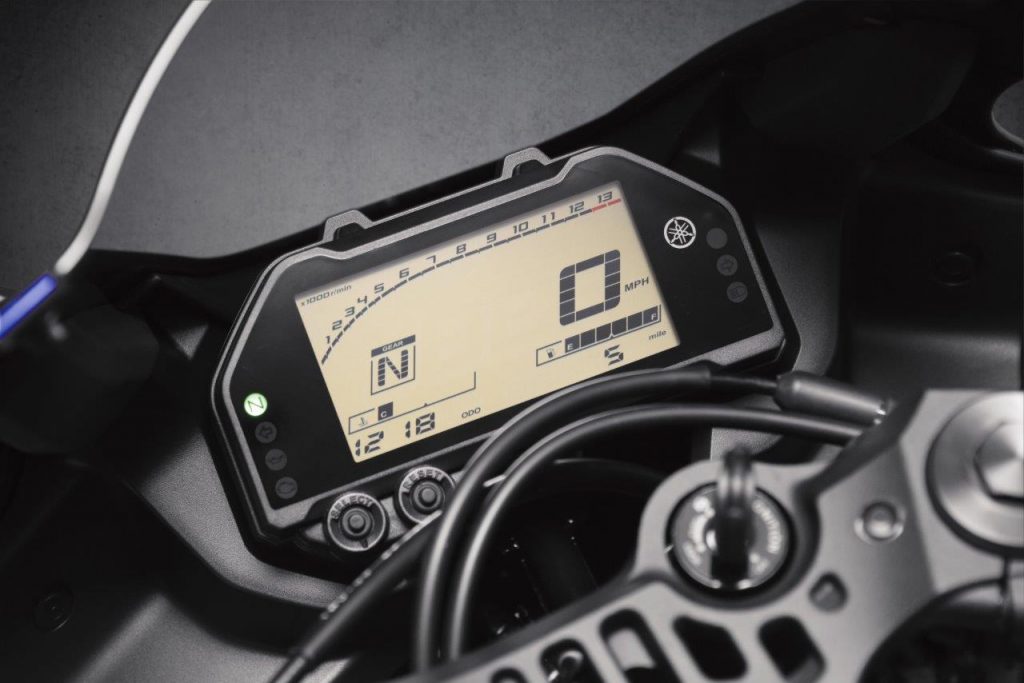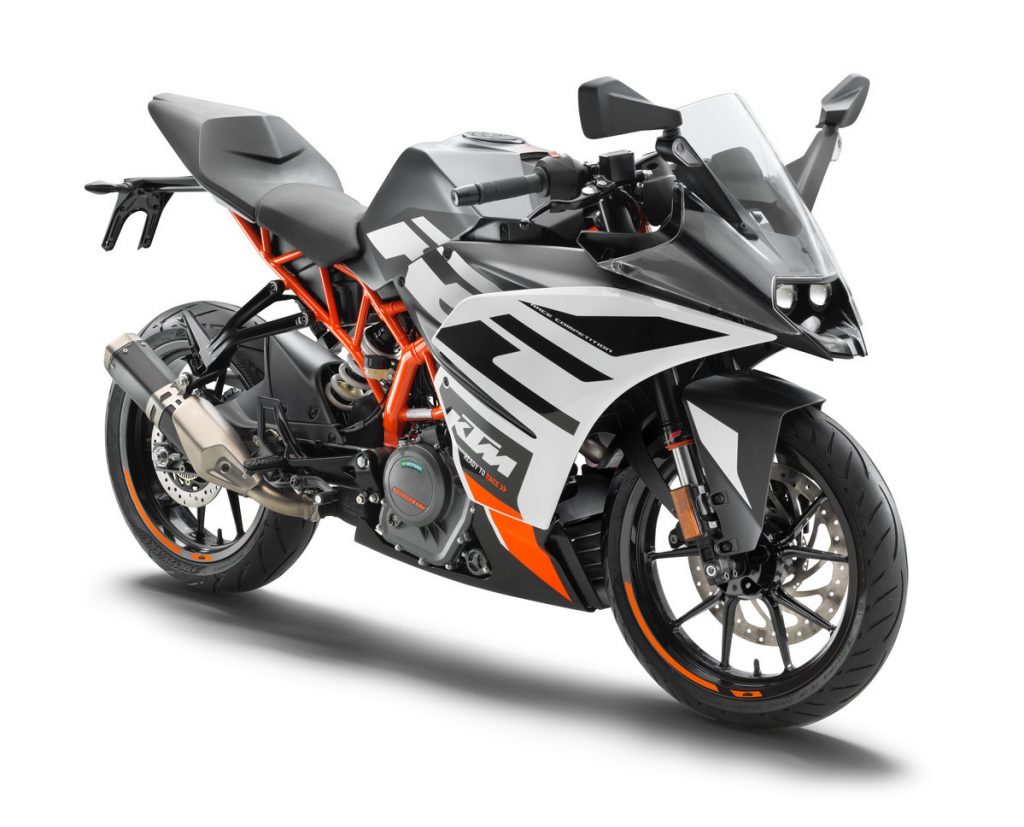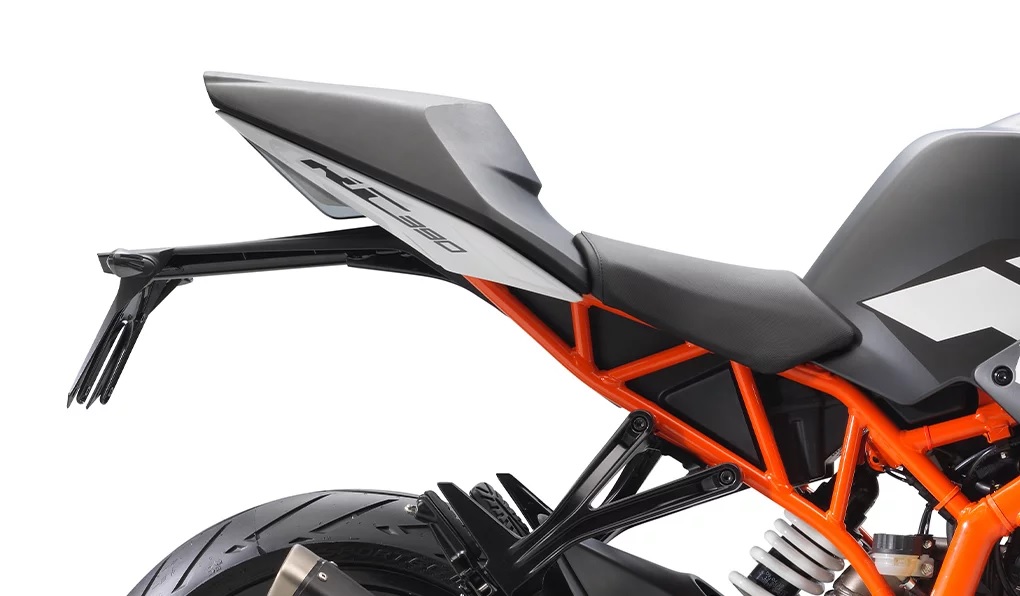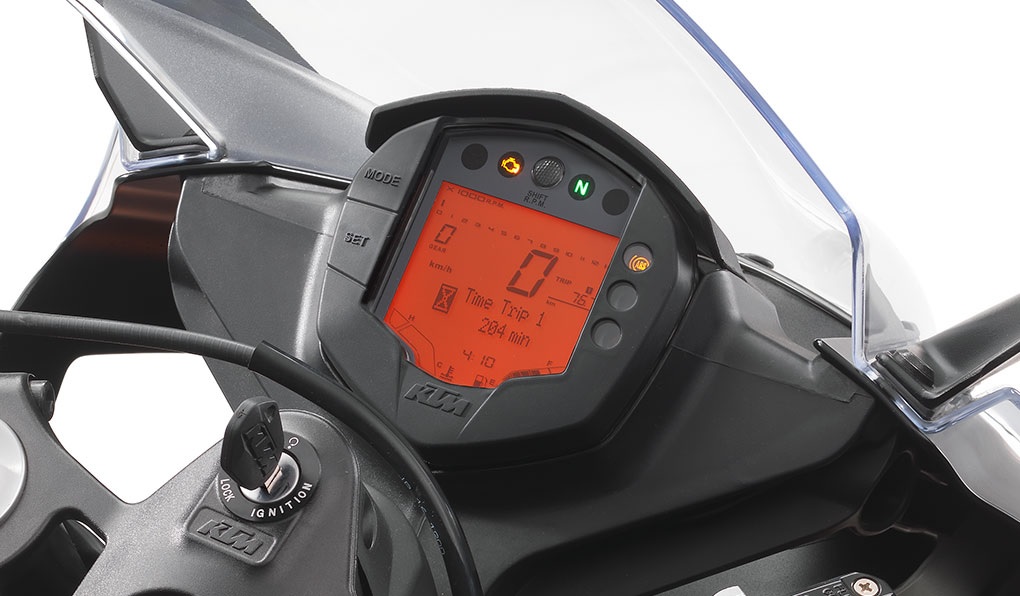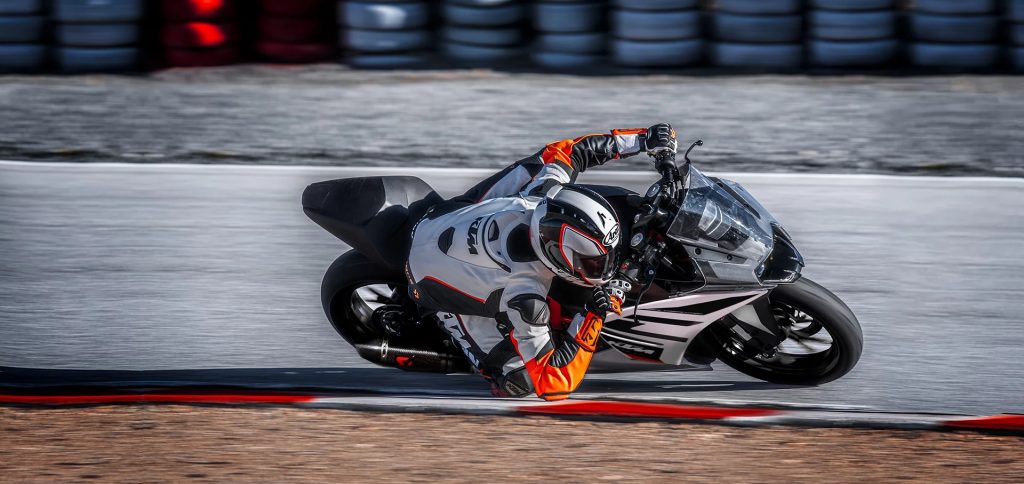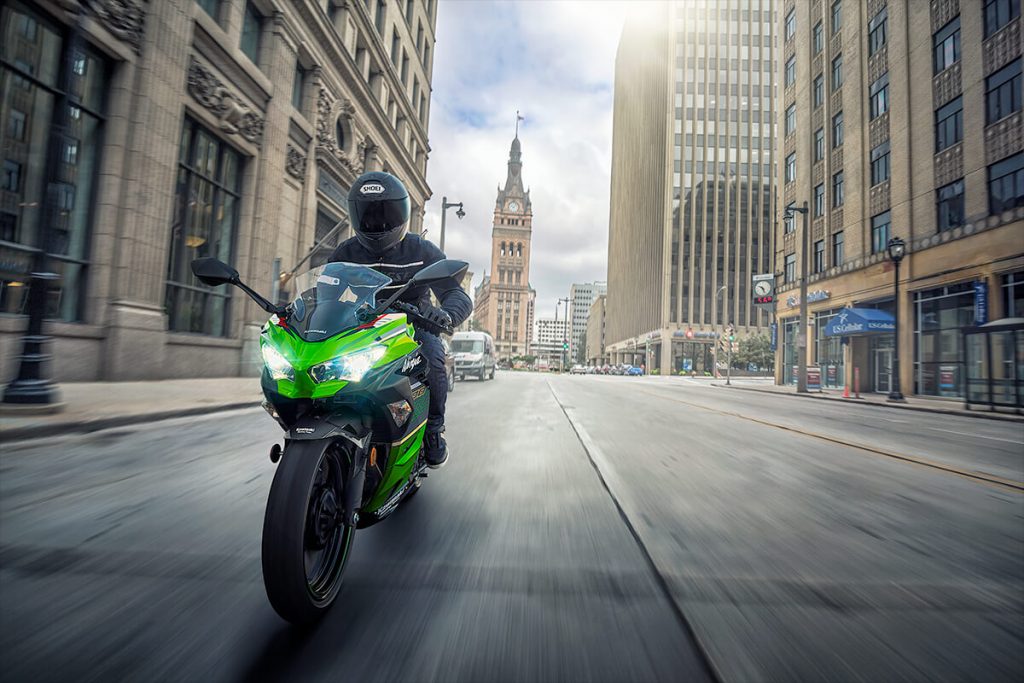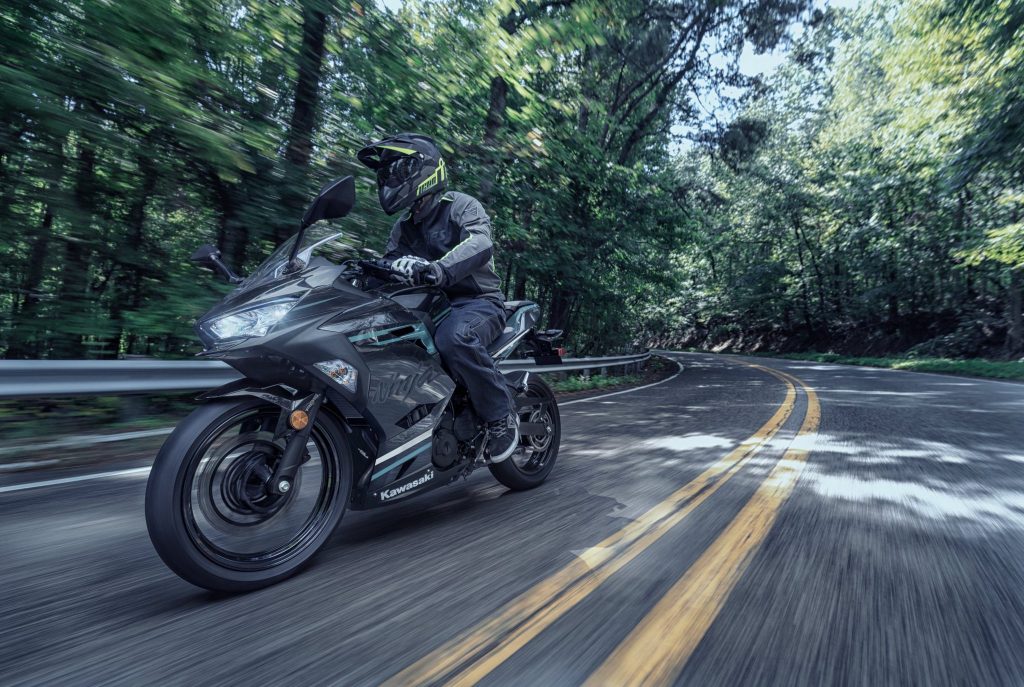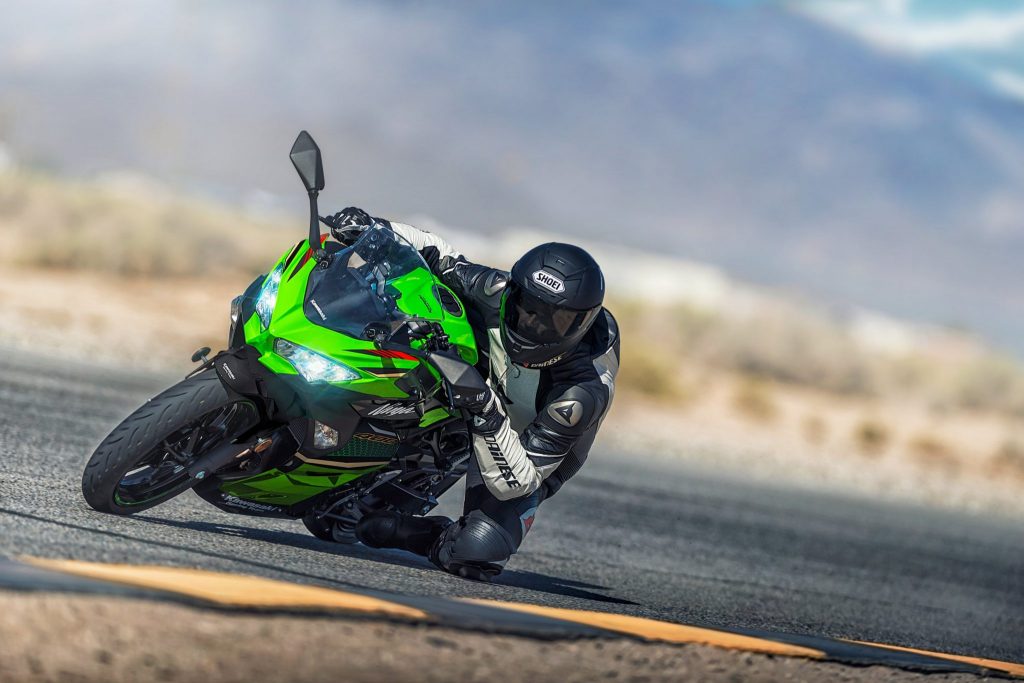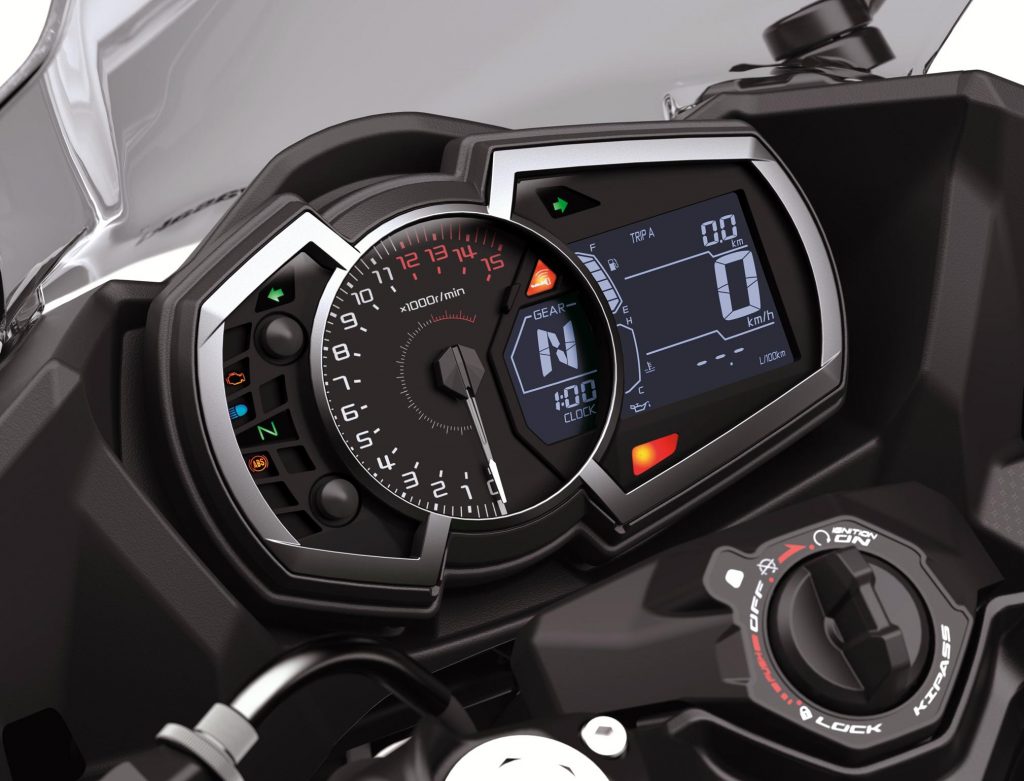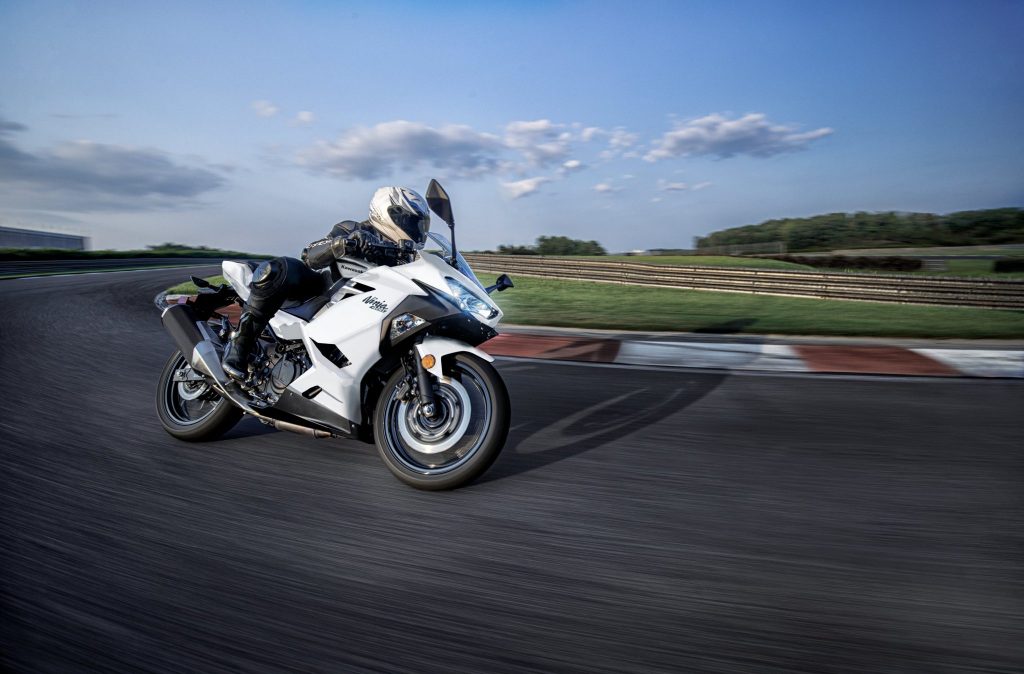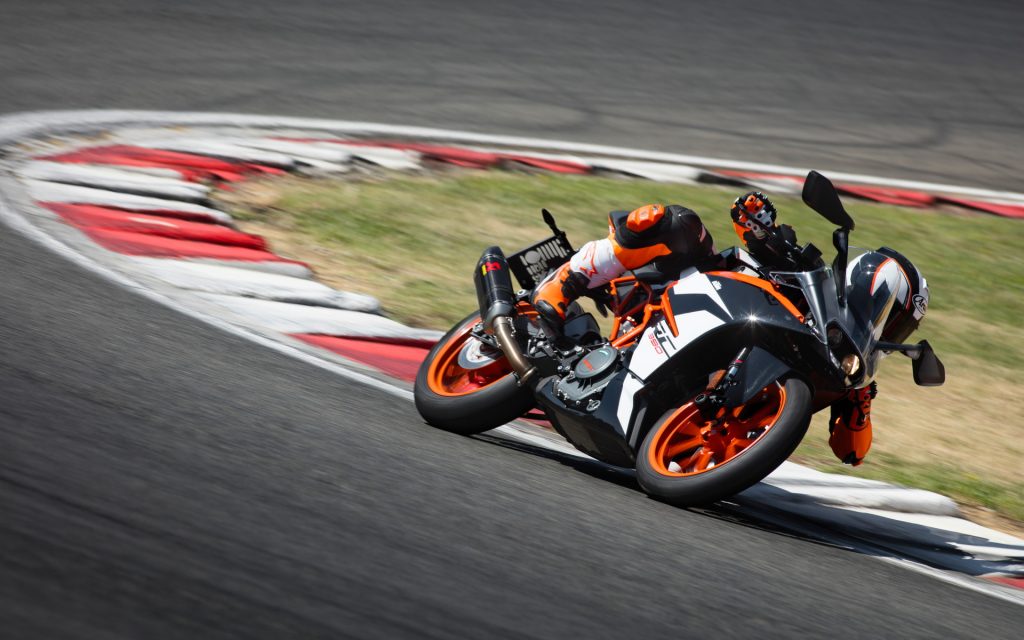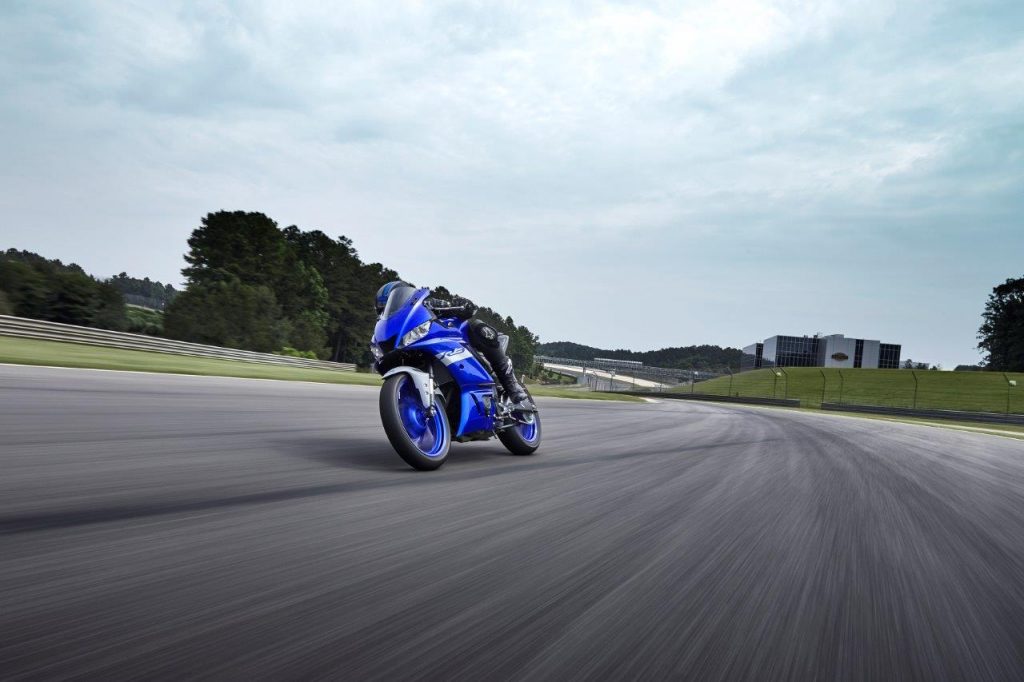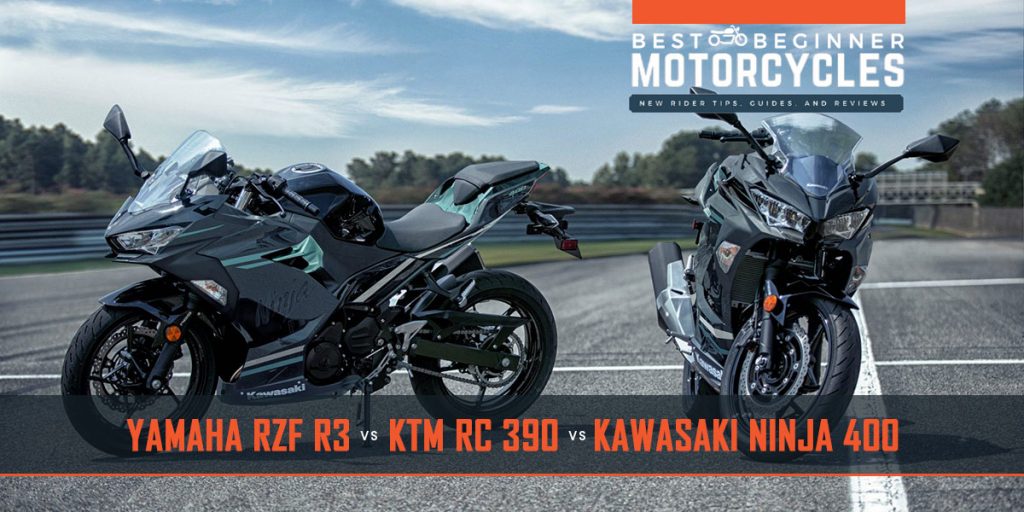One of the most common questions we get asked here at Best Beginner Motorcycles is: “I want a sport bike, which one is the best?”
It’s not as simple a question as you may think, as there are a variety of things that can influence what motorcycle is the right fit for you. Are you a taller rider? Are you looking for something for the track or a sport bike to ride around town only? Do you have a history on dirt bikes or motocross bikes through your youth and your teens? And so many more questions on top of those.
What we hope to do is present to you the three most commonly recommended sport bikes that are considered the gateway to supersports. There is no “one bike to rule them all” answer, so instead we are going to recommend based on the pros and cons of each bike, along with a variety of criteria such as power, handling, comfort, maintenance, and the like.
2020 Yamaha YZF-R3
The Yamaha YZF-R3 is a bike that demands respect. We don’t say that to ward off potential riders, we say it only to speak the truth. If this is your first bike, don’t go out and try to carve the corners with a knee down instantly. Learn its handling, its characteristics, and pretty soon you will find that the R3 will give you some of the best rides you can have.
In terms of power, the R3 has a 321 inline twin engine that produces almost dead on 50 HP. It is a rowdy engine, hungry to find the 12,500 RPM redline and scream at the top of its lungs angrily as it finds it. If you give it a bit too much, it will lift the front wheel and wag it in the air.
While the R3 loves to live above 6,000 RPM, get it above 9,000 and things turn violent. Yamaha’s sport engines are known for having good mid-range power and a sudden torque jump once into the mid-high revs, and the R3 is no different. Once it hits 9,000 RPM, you can honestly feel the bike surge under you and all of a sudden you are going way over the speed limit of whatever road you’re on. And as it tops out at 110 MPH, that’s plenty fast.
Changing gears to comfort, the R3 balances on a knife’s edge between outright track bike and some concessions for street comfort. The clip-ons are low and angled back, and the seat is about 30/5 inches off the ground. The pegs are high and back, but not too aggressively so, and the angle of everything makes you want to tuck low and tight to the tank.
Riding wise, all three bikes today will eventually wear down your butt and tailbone, and start to make your lower back feel sorry for itself after a few hours. The seat isn’t harsh, but it’s also not exactly what one would call plush.
Turn in is sharp and agile, and mid-corner dynamics are very confident. Give it a bit too much on corner exit, however, and the R3 will spin up its rear tire. Trail the throttle a little off the corner and let the bike stand up on its own, and it feels as planted as your mother’s garden.
Of the three bikes in comparison today, the R3’s digital dash is probably the best. It has large gear, speed, and tachometer displays, and can provide a variety of messages quickly and easily with the two glove friendly menu buttons on its lower left. The warning, neutral, and indicator lights are also pushed to the edges and comfortably readable.
There are a few bad points, however, with the R3. It is definitely not a tall rider friendly bike. Two of our content staff are over 6 feet tall, and when both have swung a leg over the Yamaha, the R3 in the legs and pegs department feels cramped.
It is also not the most street friendly bike. The shocks are stiff in both front and back, despite a reworked rear end over the past couple of years to give it a bit more rebound. The seating position, which we would put as “standard-but-quite-sporty” does put pressure on your hands and wrists, and you will feel that after a few miles. The factory tires (Dunlop Sportmax GPR-300’s) are grippy and sticky along the center, but the edges do get a bit vague once fully scrubbed in.
2020 KTM RC390
The KTM RC390 is a bit of an oddball motorcycle in the sport range. Whereas most bikes will start out with at least a twin cylinder, the RC 390, like the 390 Duke it was based off of, uses a whacking great 373cc single cylinder engine.
That engine produces 40 HP and has a hard redline at 11,000 RPM. It has a very nice torque curve for newer riders to get used to, but it is a curve, not a linear line. It starts out quite anemic, but once past about 5,000 RPM there is a noticeable and powerful surge that keeps getting stronger until you get near the redline.
Give it a lot of wrist, and the RC 390 will be happy to reward you with a good kick in the rear of your pants. On the flipside, you will often have to give it a lot of wrist if you are trying to pass other motorists on the road, as the RC 390 lives in the high revs. It also does not cruise very happily unless it’s screaming away, which we find to be grating on the ears and mind after a few short miles.
The RC 390 is also horrific in the seat department. Well, we shouldn’t say horrific, instead using the word dedicated. It is not designed for long commutes. It is not designed to give your butt a nice place to be while riding around town. It is, however, designed to be there on straightaways on a track.
Once you sit on an RC 390, that becomes apparent. The seat is nearly in the stratosphere at 32.5 inches. The clip-ons are the lowest of the three bikes. The pegs are high, back, and aggressively placed. The reach from seat to handlebar is the longest of the three bikes.
The dash on the KTM is also what we would generously call “cluttered.” Dominated by the speedo, the tachometer is a tiny bar across the top of the dash, and other information is jammed in with a shoehorn at the bottom of the dash. The indicator, warning, and neutral lights are all shoved top the top of the dash above the tachometer, and in bright sunlight are a little difficult to read.
While it may sound like we are lambasting the RC 390, in fact we are giving it praise. Unlike the R3 and Ninja 400, the RC 390 is a precision, dedicated instrument. If you call the R3 a chef’s knife and the Ninja 400 a butcher’s cleaver, the RC 390 is a scalpel.
The KTM RC 390 is a track bike. It is a harsh, unforgiving motorcycle on the street because that is not where it belongs. Wring its neck on the track, toss your bike and yourself into a knee down lean and carve a corner, and the RC 390 will howl in delight. It comes with Pirelli Diablo II’s as factory tires, and those are derived from the Pirelli Diablo Corsa tires used in MotoGP racing.
As well, the RC 390 is tall rider friendly. The pegs being high and back, with the raised seat height, allow for a tall rider to easily find room for their knees. However, the seating position is extremely aggressive and forwards leaning, which makes for a sore back if riding in traffic after only ten minutes.
As well as on the negative side, the KTM is not entirely what one would deign as “cheap.” It’s the most expensive of the three to buy new, and as there are not as many KTM’s as Kawasaki’s or Yamaha’s on American roads, parts are also more expensive. It’s also considered a premium brand, so expect to pay more as well for servicing and maintenance.
Kawasaki Ninja 400
The Kawasaki Ninja 400 is one of the best street-oriented sport bikes money can buy today. There, we said it. Now, let’s explain it.
Much like its predecessor, the Ninja 300, the Ninja 400 is designed from the outset to be an entry-level motorcycle. It is powered by a 399cc parallel twin that produces 49 HP, and has a torque curve that you could use as a level to put up shelves in your home. It is linear, very forgiving, and keeps pulling all the way to the 12,000 RPM hard redline.
Give it some twist, and the Ninja 400 doesn’t jump forwards as urgently as either the RC 390 or the R3, but it will still get you moving rather quickly. Unlike both of the other bikes, however, it will respond happily from almost any revs, and can pass on the freeway or the country road alike with ease. Once you’re at speed, it will also cruise happily, with the revs low enough to not be a strain, but high enough to give you instant response if you need it.
Kawasaki also wins out in the seat department. Easily the most comfortable of the three bikes, the street-wise aim of the Ninja 400 is apparent when you swing a leg over the 31 inch seat height and then bring your foot up to either peg. For taller riders, the tank has a lovely concave divot where your knees just feel like they are being sucked tightly to the tank sides, and the pegs are somehow “just right.”
The clip-ons are also high and back, allowing for a nearly standard seating position. It is still aggressive and sporty, but your back and butt will thank you for choosing a Ninja 400 if you have to commute or do any sort of multi-hour riding. As well, the suspension is tuned beautifully out of the factory with some semi-adjustability for pre-load, but it simply devours road bumps and harsh pavement without transmitting much, if any, of the harshness to the rider.
Despite being less of a track missile, the Ninja 400 does still love to corner. Brake hard before the corner, counter steer, lean out a little, and the little Kawasaki is like a pig in mud. It will give you a little happy buzz through the seat of your pants and grip strongly, and as you accelerate out of the corner, it confidently rights itself while giving you an almost thankful little vibration through the handlebars and seat.
This is because, unlike the other two bikes, the engine is included in the Ninja 400 as a stressed member of the entire frame, so some vibrations will pass through to the rider despite counter-balancers in the engine and some damping at the frame attachment points. We think it adds a little touch of character to the bike, but for a newer rider, it might be disconcerting at first.
The dash is also probably the best of the three bikes on the Kawasaki. Call us old school, but having a gigantic analogue tachometer front and center just gives it that special touch. The digital dash LCD is also very easy to read, giving you a gear indicator in the tach, and speed, temps, and averages on the right main screen.
On the negative side, the Ninja 400, despite all its positives, is not a bike that will beat many, if any, other bikes around a track. In the hands of an experienced rider, it is a very potent bike on the track, but for the newer rider, it is more of a bike to learn sport bike handling and characteristics instead of setting lap records.
As well, the Ninja 400 does have a reputation from the Ninja 300 days as being a starter bike. If other people’s opinions of you don’t affect you, then get a Ninja 400 and love it. If you are a bit of a sucker to peer pressure, of the two others, the R3 is probably the better street bike, but it will also bite your head off without a second thought.
The Verdict
We love all three bikes. Each person on the content staff has their own personal favorites, and it would make this section almost as long as the rest of the article if we went through all of their opinions. What we could agree upon, however, was the following:
If you are a new rider that wants to learn how to ride a sportbike that has you in mind as said newer rider, the Kawasaki Ninja 400 is your bike. It handles superbly, has a very comfortable riding style, and will let you learn all of its characteristics without attempting to kill you. It is also inexpensive to maintain, has Japanese reliability, and will happily take you through some twisties and let you know it’s having fun doing so.
If you are a new rider that wants to learn how to race a bike properly and eagerly on a track, and you have an amateur racing career in your plans for the future, the KTM RC 390 is your bike. It is aggressive, loves to corner, will give you a little warning before the limit, but can also toss you off if you push that 1% too hard. It is the most dedicated of the three if supersports are your goal, and will also probably make your chiropractor happy after your first season of riding because he’ll have you booked in every week for your lower back adjustments.
If you are a new rider that wants to have a machine that is both a track monster and a decent commuter bike, straddling both of the sport bike worlds, the Yamaha YZF-R3 is your bike. It is not as forgiving as the Ninja 400, nor is it as knife edge dedicated to the track as the RC 390. It is a bike that you can easily grow into if you take your time to learn it. It will reward you with some of the best corners you’ve ever carved, and will get your front wheel in the air when you pin it. It is a very respectable middle ground, but it also needs you to understand that it is dangerous if you’re stupid with it.
No matter what you choose, all three are great bikes to learn sport riding on. Just, as always, wear full gear, ride responsibly, and enjoy the ride.


